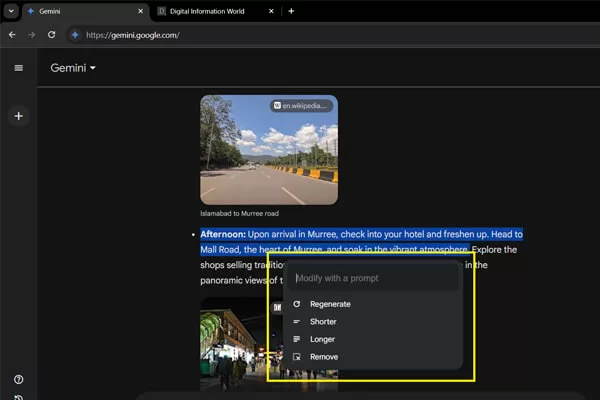
評估語言模型一直是一項具有挑戰性的任務。我們如何衡量一個模型是否真正理解語言、生成連貫的文字或產生準確的反應?在為此開發的各種指標中,困惑度指標(Perplexity Metric)是自然語言處理(NLP)和語言模型(LM)評估領域最基本、應用最廣泛的評估指標之一。
從統計語言建模的早期就開始使用困惑度,即使是在大型語言模型(LLM)時代,困惑度仍然具有重要意義。在本文中,我們將深入探討困惑度-它是什麼、如何工作、它的數學基礎、實現細節、優勢、侷限性以及它與其他評估指標的比較。
本文結束時,您將對困惑度指標有一個透徹的瞭解,並能自己實施它來評估語言模型。
什麼是Perplexity Metric?
Perplexity Metric(即困惑度指標)是對機率模型預測樣本好壞的一種測量。在語言模型中,困惑度量化了模型在遇到文字序列時的“驚訝”或“困惑”程度。困惑度越低,模型預測樣本文字的能力就越強。

更直觀地說:
- 低困惑度:該模型對預測序列中下一個詞是什麼很有信心,也很準確。
- 高困惑度:模型不確定,難以預測序列中的下一個單詞。
把困惑度看作是對問題的回答:“平均而言,根據該模型,該文字中每個單詞後面可能有多少個不同的單詞?一個完美的模型會給每個正確的單詞分配 1 的機率,從而得到 1 的困惑度(可能的最小值)。然而,真實的模型會將機率分佈到多個可能的單詞上,從而導致更高的困惑度。
快速檢查:如果一個語言模型在每一步都為 10 個可能的下一個詞分配相等的機率,那麼它的困惑度會是多少?(答案:正好 10)
困惑度如何工作?
Perplexity 的工作原理是測量語言模型對測試集的預測程度。這個過程包括:
- 在文字語料庫上訓練語言模型
- 在未見過的資料(測試集)上評估模型
- 計算模型認為測試資料的可能性有多大
其基本思想是,根據前面的單詞,使用模型為測試序列中的每個單詞分配一個機率。然後將這些機率結合起來,得出一個單一的困惑度得分。
例如,考慮句子“The cat sat on the mat”:
- 模型計算出 P(“cat” | “The”)
- 然後 P(“sat” | “The cat”)
- 然後 P(“on” | “The cat sat”)
- 以此類推
將這些機率組合起來,就得到了句子的總體可能性,然後將其轉換為困惑度。
困惑度是如何計算的?
讓我們來深入瞭解一下plexxity 背後的數學原理。對於語言模型來說,困惑度被定義為平均負對數似然的指數:
![]()
其中
- $W$ 是測試序列 $(w_1, w_2, …, w_N)$
- $N$ 是序列中的單詞數
- $P(w_i|w_1, w_2, …, w_{i-1})$是考慮到前面所有單詞後,單詞 $w_i$ 的條件機率。
或者,如果我們使用機率鏈規則來表示序列的聯合機率,我們可以得到:
![]()
其中,$P(w_1, w_2, …, w_N)$ 是整個序列的聯合機率。
讓我們逐步分解這些公式:
- 根據上下文(前面的單詞)計算每個單詞的機率
- 對每個機率取對數(通常以 2 為底
- 求整個語序的這些對數機率的平均值
- 取平均值的負數(因為對數機率是負數)
- 最後,計算 2 的冪級數
得出的值就是困惑度得分。
試試看:考慮一個簡單的模型,該模型為“The cat sat”賦予 P(“the”)=0.2, P(“cat”)=0.1, P(“sat”)=0.05 的機率。計算這個序列的可解性。(我們將在實施部分展示解決方案)
困惑度指標的其他表示方法

1. 從熵的角度看困惑度
困惑度與資訊理論中的熵概念直接相關。如果我們用 $H$ 表示機率分佈的熵,那麼:

這種關係強調了“plexity”本質上是測量預測序列中下一個詞的平均不確定性。熵(不確定性)越高,困惑度就越高。
2. 作為乘法倒數的plexity
另一種理解“困惑度指標”的方法是將其理解為單詞機率幾何平均數的倒數:

這種表述方式強調了困惑度與模型預測的可信度成反比。隨著模型的可信度提高(機率增加),困惑度也會降低。
用Python從頭開始實現困惑度指標
讓我們用 Python 來實現困惑度度計算,以鞏固我們的理解:
import numpy as np
from collections import Counter, defaultdict
class NgramLanguageModel:
def __init__(self, n=2):
self.n = n
self.context_counts = defaultdict(Counter)
self.context_totals = defaultdict(int)
def train(self, corpus):
"""Train the language model on a corpus"""
# Add start and end tokens
tokens = ['<s>'] * (self.n - 1) + corpus + ['</s>']
# Count n-grams
for i in range(len(tokens) - self.n + 1):
context = tuple(tokens[i:i+self.n-1])
word = tokens[i+self.n-1]
self.context_counts[context][word] += 1
self.context_totals[context] += 1
def probability(self, word, context):
"""Calculate probability of word given context"""
if self.context_totals[context] == 0:
return 1e-10 # Smoothing for unseen contexts
return (self.context_counts[context][word] + 1) / (self.context_totals[context] + len(self.context_counts))
def sequence_probability(self, sequence):
"""Calculate probability of entire sequence"""
tokens = ['<s>'] * (self.n - 1) + sequence + ['</s>']
prob = 1.0
for i in range(len(tokens) - self.n + 1):
context = tuple(tokens[i:i+self.n-1])
word = tokens[i+self.n-1]
prob *= self.probability(word, context)
return prob
def perplexity(self, test_sequence):
"""Calculate perplexity of a test sequence"""
N = len(test_sequence) + 1 # +1 for the end token
log_prob = 0.0
tokens = ['<s>'] * (self.n - 1) + test_sequence + ['</s>']
for i in range(len(tokens) - self.n + 1):
context = tuple(tokens[i:i+self.n-1])
word = tokens[i+self.n-1]
prob = self.probability(word, context)
log_prob += np.log2(prob)
return 2 ** (-log_prob / N)
# Let's test our implementation
def tokenize(text):
"""Simple tokenization by splitting on spaces"""
return text.lower().split()
# Example usage
corpus = tokenize("the cat sat on the mat the dog chased the cat the cat ran away")
test = tokenize("the cat sat on the floor")
model = NgramLanguageModel(n=2)
model.train(corpus)
print(f"Perplexity of test sequence: {model.perplexity(test):.2f}")
該實現建立了一個基本的 n-gram 語言模型,並新增了一個平滑處理功能,用於處理未見過的單詞或上下文。讓我們來分析一下程式碼中發生了什麼:
- 我們定義了一個 NgramLanguageModel 類,用於儲存上下文和單詞的計數。
- train 方法處理語料庫並建立 n-gram 統計資料。
- 機率方法透過基本平滑計算 P(word|context)。
- sequence_probability 方法計算序列的聯合機率。
- 最後,perplexity 方法按照我們的公式計算perplexity。
輸出
Perplexity of test sequence: 129.42
示例和輸出
讓我們用我們的實現來執行一個完整的示例:
# Training corpus
train_corpus = tokenize("the cat sat on the mat the dog chased the cat the cat ran away")
# Test sequences
test_sequences = [
tokenize("the cat sat on the mat"),
tokenize("the dog sat on the floor"),
tokenize("a bird flew through the window")
]
# Train a bigram model
model = NgramLanguageModel(n=2)
model.train(train_corpus)
# Calculate perplexity for each test sequence
for i, test in enumerate(test_sequences):
ppl = model.perplexity(test)
print(f"Test sequence {i+1}: '{' '.join(test)}'")
print(f"Perplexity: {ppl:.2f}")
print()
輸出
Test sequence 1: 'the cat sat on the mat'Perplexity: 6.15Test sequence 2: 'the dog sat on the floor'Perplexity: 154.05Test sequence 3: 'a bird flew through the window'Perplexity: 28816455.70
請注意,當我們從測試序列 1(在訓練資料中逐字出現)移動到序列 3(包含許多訓練中未出現的單詞)時,複雜度是如何增加的。這說明了困惑度如何反映了模型的不確定性。
在NLTK中實現困惑度指標
在實際應用中,您可能希望使用像 NLTK 這樣的成熟庫,它們提供了更復雜的語言模型實現和困惑度計算:
import nltk
from nltk.lm import Laplace
from nltk.lm.preprocessing import padded_everygram_pipeline
from nltk.tokenize import word_tokenize
import math
# Download required resources
nltk.download('punkt')
# Prepare the training data
train_text = "The cat sat on the mat. The dog chased the cat. The cat ran away."
train_tokens = [word_tokenize(train_text.lower())]
# Create n-grams and vocabulary
n = 2 # Bigram model
train_data, padded_vocab = padded_everygram_pipeline(n, train_tokens)
# Train the model using Laplace smoothing
model = Laplace(n) # Laplace (add-1) smoothing to handle unseen words
model.fit(train_data, padded_vocab)
# Test sentence
test_text = "The cat sat on the floor."
test_tokens = word_tokenize(test_text.lower())
# Prepare test data with padding
test_data = list(nltk.ngrams(test_tokens, n, pad_left=True, pad_right=True,
left_pad_symbol='<s>', right_pad_symbol='</s>'))
# Compute perplexity manually
log_prob_sum = 0
N = len(test_data)
for ngram in test_data:
prob = model.score(ngram[-1], ngram[:-1]) # P(w_i | w_{i-1})
log_prob_sum += math.log2(prob) # Avoid log(0) due to smoothing
# Compute final perplexity
perplexity = 2 ** (-log_prob_sum / N)
print(f"Perplexity (Laplace smoothing): {perplexity:.2f}")
Output: Perplexity (Laplace smoothing): 8.33
在自然語言處理(NLP)中,plexity 衡量語言模型預測詞序列的能力。困惑度得分越低,說明模型越好。然而,最大似然估計(MLE)模型存在詞彙外(OOV)問題,即對未見詞彙的機率為零,從而導致無限的困惑度。
為了解決這個問題,我們使用了拉普拉斯平滑法(Add-1 平滑法),它為未見詞賦予較小的機率,從而避免了零機率。修正後的程式碼使用 NLTK 的拉普拉斯類而不是 MLE 實現了一個 bigram 語言模型。這樣,即使測試句包含了訓練中未出現的單詞,也能確保有限的困惑度得分。
這項技術對於為文字預測和語音識別建立穩健的 n-gram 模型至關重要。
困惑度指標的優勢
作為語言模型的評估指標,plexity 具有以下幾個優點:
- 可解釋性:Perplexity 可明確解釋為預測任務的平均分支因子。
- 與模型無關:它可應用於任何為序列分配機率的機率語言模型。
- 無需人工註釋:與許多其他評估指標不同,perplexity 不需要人類註釋的參考文字。
- 效率:它的計算效率很高,尤其是與需要生成或取樣的指標相比。
- 歷史先例:作為語言建模領域歷史最悠久的指標之一,困惑度擁有成熟的基準和豐富的研究歷史。
- 可直接比較:具有相同詞彙量的模型可以根據其困惑度得分進行直接比較。
困惑度指標的侷限性
儘管 perplexity 被廣泛使用,但它仍有幾個重要的侷限性:
- 詞彙依賴性:困惑度得分只能在使用相同詞彙的模型之間進行比較。
- 與人類判斷不一致:在人類評估中,較低的困惑度並不總能轉化為較高的質量。
- 僅限於開放式生成:困惑度評估的是模型預測特定文字的能力,而不是生成的文字的連貫性、多樣性或趣味性。
- 無法理解語義:一個模型可以透過記憶 n-grams 來實現低困惑度,而不需要真正的理解。
- 與任務無關:困惑度不能衡量特定任務的效能(如問題解答、總結)。
- 長距離依賴性問題:傳統的perplexity實現方法在評估文字中的長距離依賴關係方面存在困難。
利用LLM-as-a-Judge克服侷限性
為了解決困惑度的侷限性,研究人員開發了其他評估方法,包括使用大型語言模型作為法官(LLM-as-a-Judge):
- 原理:使用功能更強大的 LLM 來評估另一個語言模型的輸出結果。
- 實施 :
- 使用被評估的模型生成文字
- 將文字連同評估標準一起提供給“法官”LLM
- 讓評判 LLM 對生成的文字進行評分或排序
- 優點 :
- 可對連貫性、事實性和相關性等方面進行評估
- 更符合人類的判斷
- 可針對特定的評價標準進行定製
- 實施示例 :
def llm_as_judge(generated_text, reference_text=None, criteria="coherence and fluency"):
"""Use a large language model to judge generated text"""
# This is a simplified example - in practice, you'd call an actual LLM API
if reference_text:
prompt = f"""
Please evaluate the following generated text based on {criteria}.
Reference text: {reference_text}
Generated text: {generated_text}
Score from 1-10 and provide reasoning.
"""
else:
prompt = f"""
Please evaluate the following generated text based on {criteria}.
Generated text: {generated_text}
Score from 1-10 and provide reasoning.
"""
# In a real implementation, you would call your LLM API here
# response = llm_api.generate(prompt)
# return parse_score(response)
# For demonstration purposes only:
import random
score = random.uniform(1, 10)
return score
這種方法透過在多個維度上對文字質量進行類似於人類的判斷,從而補充了困惑度。
實際應用
Perplexity 在各種 NLP 任務中都有應用:
- 語言模型評估:比較不同的 LM 架構或超引數設定。
- 領域適應:衡量模型對特定領域的適應程度。
- 失配檢測(Out-of-Distribution Detection):識別與訓練分佈不匹配的文字。
- 資料質量評估:評估訓練或測試資料的質量。
- 文字生成過濾:使用困惑度過濾掉低質量的生成文字。
- 異常檢測:識別不尋常或異常文字模式。

與其他LLM評估指標的比較
讓我們將困惑度與其他流行的語言模型評估指標進行比較:
| 指標 | 衡量標準 | 優勢 | 侷限 |
| Perplexity | 預測準確率 | 無需參考資料,高效 | 依賴詞彙,與人的判斷不一致 |
| BLEU | N-gram 與參考文獻的重疊率 | 適合翻譯、摘要 | 需要參考,創造性差 |
| ROUGE | 參考文獻中 N 片語的召回率 | 適合摘要 | 需要參考,側重於重疊 |
| BERTScore | 使用上下文嵌入的語義相似性 | 更好地理解語義 | 計算密集 |
| Human Evaluation | 人類判斷的各個方面 | 質量最可靠 | 昂貴、耗時、主觀 |
| LLM-as-Judge | 由 LLM 判斷的各個方面 | 靈活、可擴充套件 | 取決於判斷模型的質量 |

要選擇正確的度量標準,請考慮
- 任務:您要評估語言生成的哪個方面?
- 是否有參考資料:是否有參考文字?
- 計算資源:評估需要多高效?
- 可解釋性:理解指標有多重要?
混合方法通常效果最佳-既能提高效率,又能結合其他指標進行綜合評估。
小結
長期以來,“困惑度指標”一直是評估語言模型的關鍵指標,它提供了一個清晰的、資訊理論的指標來衡量模型預測文字的能力。儘管它有一些侷限性,比如與人類判斷的一致性較差,但當它與更新的方法(如基於參考的分數、嵌入相似性和基於 LLM 的評估)相結合時,仍然非常有用。
隨著模型越來越先進,評估很可能會轉向混合方法,將perplexity的效率與更多與人類匹配的指標結合起來。
底線:將困惑度視為眾多訊號中的一個,同時瞭解其優勢和盲點。
對您的挑戰:嘗試在自己的文字語料庫中進行困惑度計算!以本文提供的程式碼為起點,嘗試使用不同的 n-gram 大小、平滑技術和測試集。改變這些引數對困惑度得分有何影響?





評論留言